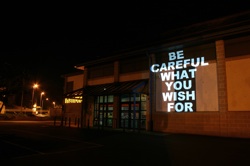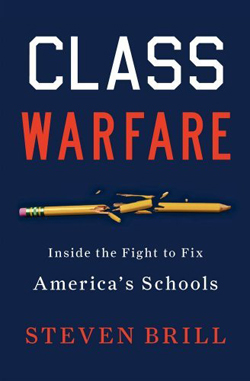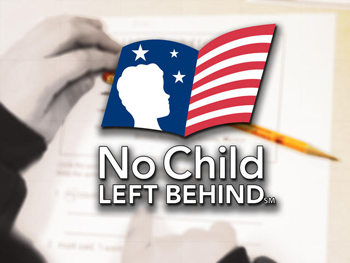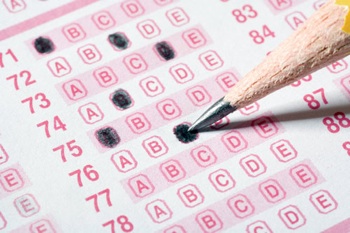John’s book, The Influence of Teachers, is currently available on Amazon; you can learn more about it at the book’s official website, or, if interested in buying copies for your class or discussion group, you can consult this page.
I have a simple request for my left and right-wing friends: “Be Careful What You Wish For.” Here’s why I say that. I know right-wingers who lust for vouchers, and I know left-wingers who live for the day when all children will have ‘individualized education plans,’ a la those in special education.
The latest call for vouchers comes from the Republican Governor of Pennsylvania (whom I do not know), but let’s imagine how vouchers might work. Suppose that the voucher (basically a check that parents could take to the school of their choice for their child’s education) was actually worth enough to buy a decent education, say $12,000. Just imagine how quickly that would attract scoundrels, scalawags and crooks, all posing as committed educators. Even cheap vouchers will attract an odd crowd, men and women who feel a calling to do some God’s work. And, unfortunately, there will be no shortage of parents who will drink the Kool-Aid (which is more of a comment about how bad some public schools are than it is about the parents’ gullibility).
And since the right-wingers want vouchers to be valid currency at religious schools, expect a flood of new schools — and maybe some new religions too.
But that’s actually not my big worry. We live in a society that protects religious freedom, and so all sorts of already-established religious institutions will be eligible for voucher-paid students. Be ready for a church school that teaches snake-worship, because those churches exist.
But you also should be ready to see an Islamic madras open in a neighborhood near you, perhaps one that preaches that Islam rejects violence and suicide bombers — or perhaps preaching and teaching that America is the source of evil in the world.
You voucher supporters don’t get to apply a litmus test here. Hand out the vouchers and get out of the way: that’s the way it will work.

(Milwaukee voucher advocate Howard Fuller told me that his city has avoided those religious traps by having strict rules for participants, but I have a sneaking suspicion that Milwaukee’s low dollar figure — about $6,000 — has a lot to do with the non-participation of zealots. Double the money, and they will come.)
As I say, “Be Careful What You Wish For.”
Now to my left-wing friends and their desire for ‘individualized education plans’ for all children, an idealized vision of schools that focus on the needs of each child. An end to cookie-cutter, one-size-fits-all education.
Wake up, folks, and take a clear-eyed look at Special Education, the birthplace of the IEP. For every IEP that has actually worked out, I am willing to wager that an equal number are in some sort of litigation. I say that because special education has turned into a cottage industry for lawyers, who have discovered that school districts are bureaucratic nightmares, often unable to walk and chew gum at the same time. So when a district cannot meet the precise specifications of an IEP, bingo: a lawsuit, which often leads to private school for the kid.
So if my left-leaning friends got their way and we had IEPs for all, that ‘cottage industry’ of lawyers would be transformed into a ‘mansion industry.’ But I doubt if very many others would benefit, including the kids.
As I say, “Be Careful What You Wish For.”
The fascination with panaceas afflicts left and right. I stand pretty much square in the middle, as do, I suspect, many of you. So here’s what I would like to suggest: A new narrative for our conversations about public education.
Right now our conversations and debates focus either on teachers (“Do we have enough good ones, and how can we get rid of the bad ones?”) or on accountability (“We know that test scores are flawed, but they’re the best we have, and we have to have accountability, don’t we?”). The ‘teacher’ narrative is demeaning to the profession, for openers. The ‘accountability’ narrative ultimately justifies the status quo of cheap tests, a dumbed-down curriculum and, often, widespread cheating.
The narrative I propose addresses education’s inconvenient truth.
Which is this: “There is close to a 1:1 correlation between parental income and educational outcomes, whether the parents are rich, poor, or somewhere in between. Kids with rich parents do well in our education system, and kids with poor parents do poorly. On one level, that seems to mean that schools basically do not matter. Only money talks.”
“However, we know that’s not true because we have in front of our eyes hundreds of examples of schools and teachers that do change lives.”
“So do not be mad about schooling’s failure to dramatically improve the lives of all 15 million children living in poverty. Instead, let’s insist that our schools imitate the successful places, people and practices. We should demand to know what’s keeping educators from imitating success. Eliminate the obstacles and — here’s where you should get mad — get rid of the educators who refuse to be copy-cats.”
If you saw our PBS NewsHour piece this week about schools in rural America, you know that the challenges facing schools are growing. With unprecedented numbers of children in poverty (a growing number of them homeless), public schools will be forced to step up to the plate even more than usual.
And so, ignoring my own advice, here’s what I wish for: We abandon the search for magic bullets and instead copy what successful schools — and successful networks of schools — are doing.








